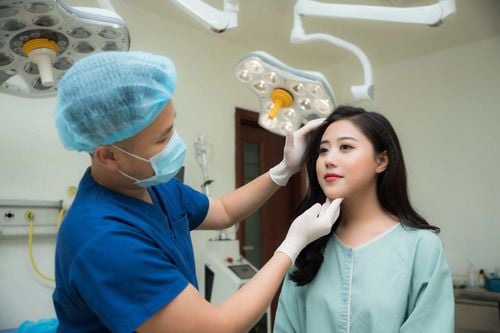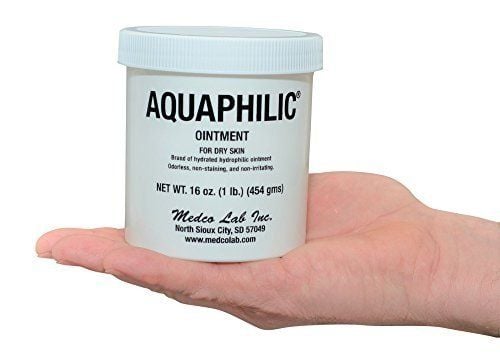This is an automatically translated article.
As people age, the shape of their faces begins to change. As fat accumulates in the neck, the skin begins to sag and the jaw muscles begin to contract. This can cause your lower jawline to sag. One study found that performing facial exercises and massaging the face and neck area regularly for 20 weeks resulted in fuller neck and cheeks and a more youthful appearance. The following article will help you how to effectively massage your neck without sagging.1. The benefits of massage for the neck area
While facial changes caused by genetics or aging are completely natural, there are a number of exercises we can do to help define the jawline on our face. Massaging the neck, chin, jaw, and other facial muscles can lead to subtle changes in our faces, including sharper cheekbones and more prominent jawline. These exercises can do more than give your face a clearer or younger look — they can also prevent neck pain, headaches, and jaw pain. Studies have shown that jaw exercises can help reduce the impact of temporomandibular disorders or chronic pain in the jaw muscles, bone pain, and peripheral nerve pain...Researcher Karen Sherman, senior scientific investigator at the Institute for Group Health Research in Seattle, says one-hour massage sessions two or three sessions a week are best. "In the short term, a 60-minute massage offers more benefits to the head, face, and neck area than 30 minutes, and you'll want to do multiple massages a week for the first four weeks," she says. Her study, which examined the effects of massage on head, face and neck health, was published in the March/April issue of Annals of Family Medicine.
Persistent neck pain. And sagging neck skin is very common and has many causes — among them accidents, poor sleep or sitting stooped in front of the computer too much, Sherman says. Doctors often recommend anti-inflammatory medications, but these often don't provide enough pain relief. “People with back and neck pain are often not satisfied with what they get from their doctor, so they are always looking for more effective solutions,” explains Sherman.
Previous studies on massage for neck pain have produced conflicting results, so Sherman's team decided to take a closer look. Specifically, they wanted to determine the ideal massage frequency to reduce neck pain as well as limit sagging skin. In a previous study, Sherman found that the benefits of massage were only apparent after 4 weeks.
For her new study, she randomly assigned 228 men and women, ages 20 to 64, to one of six groups. These groups included those who received a 30-minute massage two or three times per week, an hourly massage once, two or three times weekly, and a comparison group who received no massage. Evaluating neck function and pain levels one week after treatment ended, the researchers determined that patients who received massages over a period of one hour three times a week showed the best results after four weeks. week of research. Compared with those who received no massage, "those who received massages three times a week were nearly five times more likely to experience a clinically significant (mean important or noticeable) improvement in neck function and a reduction in pain is more than two times more clinically significant,” says Sherman.

Massage vùng cổ thường xuyên sẽ giúp diện mạo trẻ trung hơn
2. Neck massage exercises that don't sag
As people age, the shape of their faces begins to change. As fat accumulates in the neck, the skin begins to sag and the jaw muscles begin to contract. This can make our jawline worse, affecting the aesthetics of the face. However, as mentioned, there are still massage exercises to help us overcome this situation.2.1. Exercises to help determine the function line
Jaw and neck muscles are rarely exercised properly, even by those who exercise. Over time, this can lead to sagging neck and jaw skin, less defined jawline, or even neck pain. These jawline exercises can help create a defined jawline and prevent neck pain, jaw pain, and headaches.Neck curl exercise
Neck flexion exercise is the same as when we do crunches. This exercise activates rarely used neck muscles, so remember to do it slowly and stop if you feel pain. Steps to perform the neck arch exercise include:
Step 1: Lie on your back and press your tongue to the roof of your mouth. Step 2: Bring your chin up in front of your chest, lifting your head about two to three inches off the ground. Step 3: Slowly lower your head and repeat. Vowel Pronunciation Exercise
By pronouncing vowels and stretching the mouth, this exercise targets the muscles around our lips. Steps to practice vowel pronunciation include:
Step 1: Open your mouth to make an “O” sound. Exaggerate vowels to tighten the muscles. Step 2: Then, open your mouth to make an exaggerated "E" sound. Step 3: Repeat “O” and “E” movements. Clavicle Exercise
The collarbone exercise helps to exercise the muscles under the chin that support our jaw. Steps to perform the collarbone exercise include:
Step 1: Sit down on the floor or in a chair. Step 2: Lean your head back a few inches until you feel the muscles on the side of your neck contract, keep your chest as still as possible and make sure your ears are above your shoulders. Keep your chin parallel to the floor as you move. Step 3: Repeat the same movement, but this time push the head forward. Chin lift exercise
Chin lift exercise lifts the muscle groups in the lower half of the face, including our jaw muscles. Steps to perform the chin lift exercise include:
Step 1: Close your mouth and slowly push your jaw forward. Step 2: Lift your lower lip and push up until you feel the stretch in your chin and jaw muscles. Step 3: Hold this position for about 10 seconds before repeating the exercise. Tongue Pull Exercise
Tongue pull targets the muscles below the chin to tone the jawline. Steps to perform tongue pulling exercises include:
Step 1: Place your tongue on the roof of your mouth, right behind your teeth. Step 2: Press your tongue firmly against the roof of your mouth to create tension. Step 3: Make a vibrating sound to activate the muscles.

Ngoài thực hiện các cách massage cổ không bị chảy xệ bạn cần có chế độ ăn khoa học để chống lại sự lão hóa
2.2. Keep yourself safe when doing neck massage exercises
One thing to keep in mind when doing all of these exercises is to do it very slowly. The longitudinal muscles of the neck and jaw are often underdeveloped. This means that if we do it too quickly or do it too many times, it can cause neck strain. If you feel any pain during these exercises, stop immediately. Check your posture and make sure your neck is properly aligned, if the pain persists see your doctor.Experts recommend applying facial massage exercises for about 30 minutes a day at least six days a week to see significant results. It's best to start with a few minutes a day and work your way up. It takes time to develop these muscles - and even more time to see results. If we work too hard in these exercises, we can damage the bone or cartilage that cushions the jaw joint, leading to pain and injury to the jaw. If you are experiencing jaw pain, check with your healthcare professional or neuromuscular dentist to see if these exercises are right for you.
Before thinking about massage exercises to prevent sagging neck, it is necessary for each person to follow a healthy, balanced diet and exercise regularly to slow down the aging process. If you feel that more weight gain is contributing to the change in shape around your jawline, lifestyle changes may help. While facial exercises can be very helpful in maintaining the neck and facial muscles and keeping the jawline sharp, they are not a fix-all. To look and feel healthy, we also need to practice good eating habits and exercise regularly.
Please dial HOTLINE for more information or register for an appointment HERE. Download MyVinmec app to make appointments faster and to manage your bookings easily.
Reference source: webmd.com












